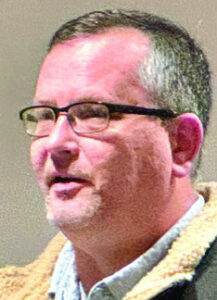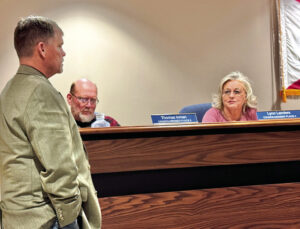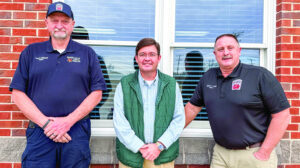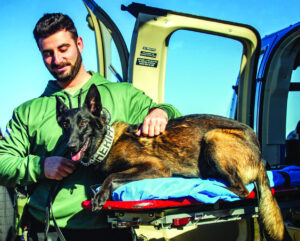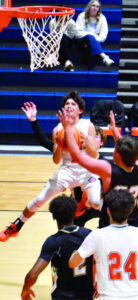Lee Brownell: Inspiring young minds
To learn more
Lee Brownell, a 1986 graduate of Russellville High School, has dedicated his career to inspiring young minds. Over the years, his passion for teaching and commitment to his students have made a lasting impact on the community.
His journey in education began after attending Northwest Shoals Community College and earning a bachelor’s degree in Elementary Education from the University of North Alabama.
After marrying his wife, Deborah, Brownell ventured to Georgia, where he taught math, history, and English before discovering his true calling in science education. During this time, he earned a master’s degree in Middle School Education.
Eventually, he and his wife returned to their hometown of Russellville, where Brownell spent 17 years teaching middle school science.
His expertise and dedication caught the attention of the University of North Alabama, where he took on a role with AMSTI (the Alabama Math, Science, and Technology Initiative), a program aimed at helping educators align with best practices in teaching. This position allowed Brownell to travel extensively, sharing his knowledge and strategies with fellow educators. Despite his success in this role, Brownell’s heart remained in the classroom, leading him back to Russellville Middle School, where he continues to teach today.
Together, Lee and Deborah have two daughters, Shelby and Chloe, who have inherited their parents’ strong values and commitment to education.
In his current role, Brownell teaches physical science to eighth graders and a STEM (science, technology, engineering and mathematics) course to seventh and eighth graders. Under his guidance, the STEM program at Russellville Middle School has flourished, showcasing innovative projects that integrate cutting-edge technology and real-world applications.
One of the hallmark features of Brownell’s teaching is his ability to engage students in hands-on, collaborative projects.
His students are involved in initiatives that include drone technology and thermal imaging, which are utilized to study campus erosion and energy loss. For instance, students use drones to identify areas on campus prone to erosion and apply principles of kinetic energy and physics to analyze their findings. This data is then shared across other science and STEM-based courses, creating an interdisciplinary learning experience that connects multiple subjects.
In another project, students are constructing a rocket, exploring the principles of aerodynamics and propulsion. Meanwhile, another group is building a radio telescope capable of observing celestial bodies such as the sun and Jupiter. This ambitious project not only introduces students to advanced scientific concepts but also involves collaboration with local radio enthusiasts, who assist in converting the collected data into usable formats. The findings are then shared with sixth graders working on a space science unit, demonstrating a seamless integration of learning across grade levels.
“I always tell my classes that science incorporates math, reading, and history. In science, we do it all,” Brownell said.
His philosophy underscores the importance of teaching students to see connections between various fields of study.
Throughout his career, Brownell has witnessed significant changes in education, particularly in the incorporation of technology. He recalls the early days when schools had only a few computers located in dedicated labs. By the mid-2000s, classrooms began to have a single computer for the teacher’s use, which later expanded to the widespread adoption of one-to-one initiatives, providing each student with a device.
Despite these advances, Brownell emphasizes the importance of balance. He prefers a 1:4 ratio, or paired groupings, as these arrangements foster collaboration and help students develop essential social and reasoning skills.
Brownell’s teaching style reflects his belief in a student-centered learning environment. He takes great pride in seeing his students take ownership of their learning and develop critical thinking skills through hands-on activities and problem-solving tasks.
“Seeing my students learn and grow is what makes this job so fulfilling,” he said.
In addition to his classroom efforts, Brownell’s impact extends beyond the school walls. The projects and programs he has introduced at Russellville Middle School have garnered attention and inspired other educators to adopt similar approaches. His dedication to continuous improvement and innovation serves as a model for what education can achieve.
Read the rest of this year’s Progress – Progress 2025.


